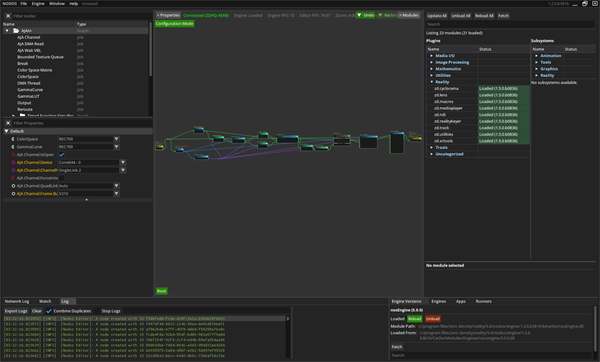What is Nodos?

Nodos is a node-based graph scheduling system designed to simplify and streamline the development of complex tasks and processes. It is developed in C++ and offers a wide range of features to enhance productivity and flexibility for developers.
info
Nodos also includes its own editor, a software development interface. However, using the Nodos editor to control Reality 5 is not supported, since it is not a production tool.
Capabilities
- Nodos allows developers to create and manage nodes within a graphical interface, which can represent various tasks, processes, and operations. It integrates seamlessly with shader languages such as GLSL (OpenGL Shading Language) and HLSL (High-Level Shading Language), enabling the automatic compilation and linking of shaders at runtime. This means developers can execute C++ code and shaders within the node graph without needing additional programming, significantly simplifying the workflow.
- Nodos provides an environment for external processes connects to it using a provided app SDK. These processes can be represented as nodes, making it possible to schedule and manage them within Nodos’ node graph.
- Nodos supports running AI models in real-time using ONNX Runtime with CUDA and TensorRT. This feature is particularly useful for tasks such as image segmentation, super-resolution, and depth generation. It also provides nodes for loading and running AI models, enabling real-time processing and analysis of images and video.
Relationship between Nodos and Unreal Engine
Nodos supports integration with Unreal Engine 5, allowing developers to enhance and extend their Unreal Engine projects using Nodos' capabilities.
- Plugin Support: Nodos provides a plugin named Nodos Link for Unreal Engine 5. This plugin facilitates cross-process communication between Unreal Engine and Nodos, enabling Unreal Engine projects to leverage Nodos' node-based scheduling and other features.
- Example Applications: Nodos includes example applications demonstrating how to integrate Unreal Engine 5 with Nodos. These examples show how to utilize Nodos for tasks such as real-time rendering and process management within Unreal Engine projects.
- Cross-Process Communication: The integration allows external processes running in Unreal Engine to be represented as nodes within the Nodos graph. This setup enables efficient scheduling and management of these processes using Nodos' node-based system.
For more details, please visit: